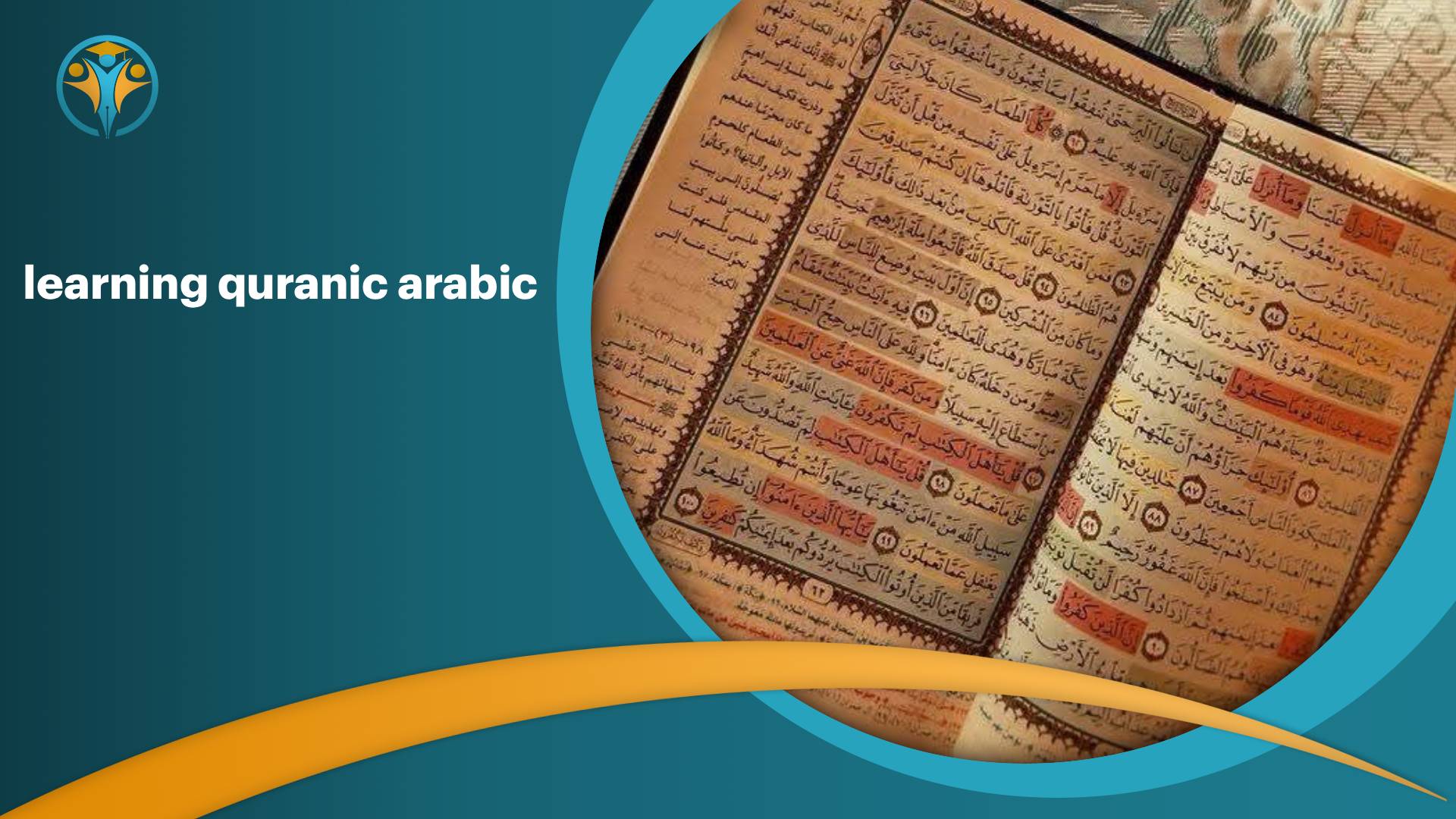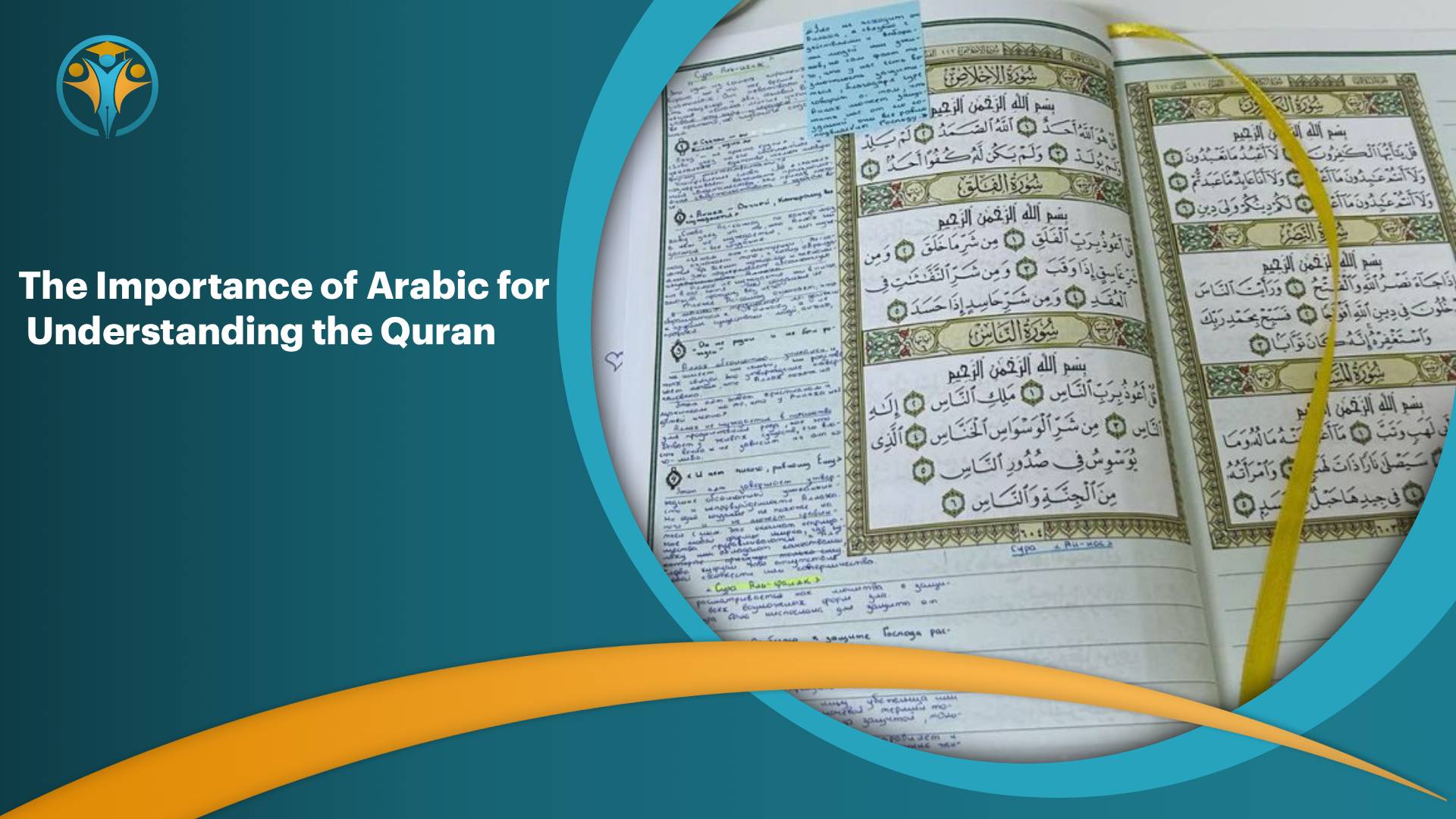
Learning Quranic Arabic 2025: Unlock a Life-Changing Skill
Learning Quranic Arabic is a transformative journey that allows Muslims to connect deeply with the words of Allah in their original form. At Super Muslim Academy, we are committed to guiding non-Arabic speakers through this journey with structured, step-by-step courses that focus on understanding, pronunciation, and correct recitation of the Quran.
By mastering the language of the Quran, students not only improve their recitation but also develop a profound spiritual connection with the divine message. Our courses combine traditional methodology with modern teaching techniques to ensure every learner builds a strong foundation in Quranic Arabic from the very beginning.
The Importance of Arabic for Understanding the Quran

Learning Quranic Arabic is essential for anyone seeking to fully grasp the depth and beauty of the Quran.
The Quran was revealed in the Arabic language, as clearly stated in the verse: “These are the verses of the clear Book. Indeed, We have sent it down as an Arabic Quran” (Surah Yusuf 1–2). This divine choice of language emphasizes the significance of Arabic in conveying the Quran’s precise meanings and divine wisdom.
While translations can be helpful, they often fall short of capturing the full richness, context, and linguistic depth of the original text. For non-Arabic speakers, this means that relying solely on translations can result in a limited understanding. That’s why learning Quranic Arabic is not just beneficial—it is a crucial step toward connecting with the Quran on a deeper and more authentic level.
Read also: holy quran
Read also: learn quranic arabic
Super Muslim Academy Builds Confidence in Quran Recitation Skills
Children thrive when learning is made simple and encouraging. At Super Muslim Academy, we offer step-by-step guidance to strengthen recitation and Tajweed. Our supportive teachers ensure mistakes are corrected early with compassion.
Sign up today and give your child the gift of confident Quran reading.

Challenges for Non-Arabic Speakers
Non-Arabic speakers often face the challenge of connecting with the Quran beyond recitation.
While translations are helpful, they do not fully convey the subtleties and depth found in the original Arabic text.
That’s why many choose to pursue learning Quranic Arabic, which provides a stronger foundation for understanding the divine message.
Specialized programs now focus on teaching the language in a way that makes Quranic verses more accessible and meaningful to learners from all backgrounds.
Advantages of Online Quranic Arabic Courses
In today’s digital age, learning Quranic Arabic has become more accessible through online platforms.
Students can study from the comfort of their homes, saving time and money that would otherwise be spent on travel.
Online classes offer flexibility in scheduling, allowing learners to pick convenient times for their lessons. Additionally, students can choose instructors who are experienced and qualified in Quranic studies, often with university-level training.
Tailored Learning for Diverse Needs
Online courses also cater to the specific needs of students. For instance, female students can opt for female teachers, ensuring comfort and cultural sensitivity.
The one-on-one or small group setups offered in many online platforms enhance the learning experience, enabling faster progress. With such personalized teaching approaches, learning Quranic Arabic becomes a more engaging and effective process for students around the world.
Accessible Learning for Everyone
Thanks to technology, learning Quranic Arabic is now possible regardless of one’s location.
Whether you live in an Arabic-speaking country or not, there are numerous programs available online that help you understand the Quran in its original language.
Structured Levels for Effective Learning
Online Quranic Arabic courses are usually divided into multiple levels, depending on the learner’s prior knowledge and language ability.
Beginners, especially non-Arabic speakers, typically start with the Arabic alphabet and its proper pronunciation.
Some teaching materials include transliteration into the student’s native language to make the learning process easier and more accessible.
This foundational stage is essential for anyone committed to learning Quranic Arabic in a systematic and correct way.
Read also: quran courses online
Mastering the Arabic Alphabet
At the beginner stage, students focus on recognizing and reading Arabic letters in different positions—at the beginning, middle, and end of words.
Teachers also introduce students to the basic Arabic vowels (Harakat), such as Fatha, Kasrah, Dhammah, and Sukoon. Through guided practice, learners develop the ability to pronounce letters correctly using these vowels.
A key part of learning Quranic Arabic is understanding the concept of “mad” letters—Alif, Waw, and Yaa—and their proper use in Quranic pronunciation.
The Noorani Qa’idah Method
One of the most effective methods used today for teaching Quranic Arabic is the Noorani Qa’idah.
This method focuses on improving students’ recitation skills by teaching them correct pronunciation, letter formation, and vowel usage.
It has become a widely trusted approach for both children and adult beginners. Anyone learning Quranic Arabic can benefit from this method, as it lays a strong phonetic foundation that enhances reading accuracy and fluency.
Avoiding Early Reading Mistakes
It’s important that non-Arabic speakers avoid reading full Quranic verses at the very early stages.
Attempting to read the Quran too soon—without mastering the basics—can lead to incorrect habits that are difficult to correct later.
Proper sequencing is critical in learning Quranic Arabic, and students should focus first on the alphabet, vowels, and pronunciation rules. Only after these fundamentals are well-established should they move on to actual Quranic text.
Islamic Foundations Alongside Language
In some beginner-level courses, teachers also include essential Islamic concepts to support the student’s understanding of the faith.
These may include topics such as the Five Pillars of Islam, the meaning of Iman (faith), Ihsan (excellence), and the beautiful names of Allah.
This integrated approach not only enhances the student’s religious knowledge but also strengthens their motivation for learning Quranic Arabic, connecting language learning directly with spiritual growth.
Understanding the Role of Tajweed.
After mastering the Arabic alphabet and basic pronunciation, students move on to the essential stage of learning Tajweed—the set of rules that govern the correct recitation of the Quran.
Tajweed ensures that the Quran is recited just as it was revealed to the Prophet Muhammad (peace and blessings be upon him).
A key aspect of learning Quranic Arabic involves understanding the significance of Tajweed, which adds clarity, beauty, and reverence to Quranic recitation
The Purpose and Beauty of Tajweed
Tajweed is not just about rules—it’s about enhancing the spiritual experience of reading the Quran.
As the Prophet Muhammad (peace and blessings be upon him) said, “Beautify the Quran with your voices,” highlighting the importance of precise and melodious recitation.
For students learning Quranic Arabic, Tajweed is a powerful tool that deepens their connection with the text.
It helps avoid common mistakes in pronunciation that could alter the meaning of verses and allows for more mindful reflection on Allah’s words.
The Historical Roots of Tajweed
The Quran was revealed with Tajweed through the angel Jibreel to the Prophet Muhammad (peace and blessings be upon him), who recited it using the natural rhythm and articulation of classical Arabic.
At the time, native speakers applied these rules instinctively. Over time, however, interaction with non-Arabic cultures diluted this purity, even among Arabs. Therefore, formal study of Tajweed became necessary.
Today, anyone learning Quranic Arabic must include Tajweed to ensure authentic and respectful recitation of the Quran.
Tajweed for Non-Arabic Speakers
Non-Arabic speakers, in particular, benefit greatly from structured Tajweed instruction.
Since they don’t naturally use Arabic sounds in daily speech, learning the rules of Tajweed provides a reliable method to recite correctly.
For these learners, Tajweed bridges the gap between pronunciation and meaning, making their journey of learning Quranic Arabic more accurate and spiritually rewarding.
With consistent practice, students gain confidence in their recitation and begin to internalize the rhythm and tone of the Quran.
Integrating Tajweed into Quranic Arabic Studies
Effective Quranic Arabic programs don’t treat Tajweed as a separate subject—they integrate it into every level of the course.
This ensures that learners apply what they study in real-time while reading Quranic verses. By doing so, learning Quranic Arabic becomes a holistic experience, combining language skills with spiritual understanding.
Tajweed training equips students not just to read, but to feel and live the words of the Quran as they were meant to be experienced.
Introduction to Makharij in Tajweed
One of the core components of Tajweed is understanding how Arabic letters are pronounced.
Each letter in the Arabic alphabet has a specific point of articulation, known as Makhraj (plural: Makharij), which refers to the place in the vocal tract where the sound originates.
This knowledge is vital for anyone learning Quranic Arabic, as accurate pronunciation preserves the meanings of Quranic words.
Scholars like Ibn al-Jazari have classified the Makharij into five general areas: the tongue, lips, nasal passage, throat, and chest.
Practical Training on Makharij
In this stage, the teacher introduces the student to each Makhraj and the letters that come from it.
Proper pronunciation must be learned through direct practice and oral correction, not just theory. The teacher listens closely to the student’s articulation, correcting errors and helping them form each sound correctly.
For students learning Quranic Arabic, this hands-on approach is essential, as many Arabic sounds do not exist in other languages and require careful training to master.
Understanding the Characteristics of Arabic Letters
Once the student becomes familiar with the points of articulation, they are introduced to the Sifaat—the characteristics of each Arabic letter.
These include concepts such as Hams (breathiness), Jahr (vocalization), Isti’la (elevation), Istifal (lowering), Rakhawah (softness), Shiddah (strength), Tawassut (moderation), Itbaaq (compression), Infitaah (opening), Izlaaq (fluidity), and Ismaat (restraint).
Understanding these features helps students recite with clarity and precision. Mastery of these aspects greatly enhances the experience of learning Quranic Arabic, enabling a more authentic and powerful recitation.
Application Through Quranic Examples
The application of Makharij and Sifaat must be reinforced using examples from the Quran.
The teacher highlights how each rule is used within actual verses, which helps the learner connect theory to practice.
This method allows students learning Quranic Arabic to internalize the correct pronunciation while engaging with the sacred text. Over time, they begin to notice these details during their own recitation and can self-correct more effectively.
Building Fluency with Consistency

Consistent practice is essential when studying Makharij and Sifaat.
Repetition, listening to expert reciters, and reading under a qualified teacher’s supervision all contribute to developing fluency.
These foundational skills are crucial for anyone serious about learning Quranic Arabic, as they directly impact the correctness and beauty of Quranic recitation. With dedication, students progress from basic awareness to confident, precise articulation that reflects the richness of the Arabic language and the majesty of the Quran
Learning Quranic Arabic with Super-Muslim opens the door to a deeper, more personal relationship with the Quran.
By understanding the language in which the Quran was revealed, students can engage with its meanings directly—without relying solely on translations. At Super-Muslim, our goal is not only to teach Arabic, but to empower learners to reflect, recite, and live by the Quran’s message.
Whether you’re a beginner starting with the alphabet or advancing through Tajweed and grammar, every step brings you closer to the heart of the Quran. Start your journey today and experience the true beauty of the Quran through its original language.
In conclusion, Learning Quranic Arabic is a transformative journey that opens the door to understanding the Quran in its purest form. It allows learners to connect deeply with the words of Allah, appreciating the beauty, precision, and wisdom of the original language.
Beyond linguistic skills, this knowledge nurtures spiritual growth, strengthens faith, and enriches daily worship. By dedicating time and effort to Learning Quranic Arabic, students gain not only clarity in meaning but also a lifelong bond with the divine message, guiding them toward a more purposeful and fulfilling life.
Learn more: fajr prayer
Read more: quran online teacher



